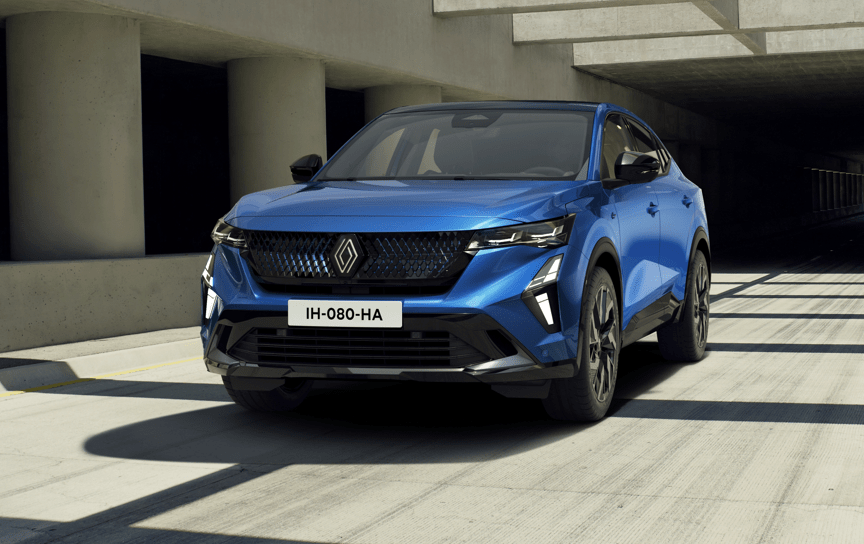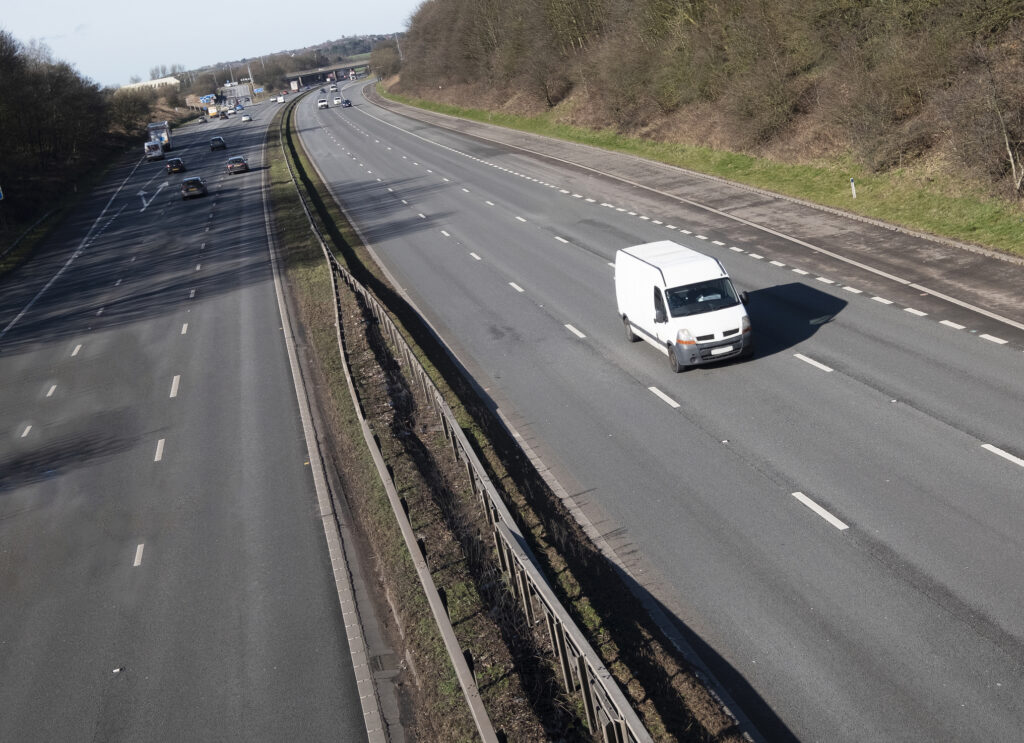Big declines for BEVs in EU new-car markets
10 September 2024

Provisional tariffs on battery-electric vehicles (BEVs) built in China and imported into the EU came into effect in July. A month later, three of Europe’s biggest markets saw the technology struggle. Autovista24 special content editor Phil Curry considers the possible link.
The new-car markets of France, Italy and Spain saw continued losses in August, with each country posting registration declines.
The month has been particularly hard for the automotive industry. However, it is often viewed as a slower month, with the summer holiday period affecting deliveries. Yet the figures signal an end to the bounce-back from the supply-chain crisis. A sustained period of loss came to an end two years previously.
The result also follows the implementation of provisional tariffs on BEVs built in China and imported into the EU. The impact is difficult to assess in a month that is often one of the weakest in the new-car market. But with all the big-four EU countries experiencing large drops, it may have contributed to the final totals.
Frustration in France
Registrations in France fell dramatically last month. Data from the Automotive Industry and Mobilities (PFA) shows that 85,977 passenger cars were delivered in the month, down by 24.3%. While there was one less working day in August 2024, this would not account for the drop of nearly a quarter compared to last year.
The French market has been the worst performer of the European big five in recent months. August’s results follow declines in May, June and July, while March also saw a drop. However, this was likely due to the early Easter period.
While the year started well in the country, the latest figures have pushed the yearly total into a decline. Registrations across the first eight months of 2024 now sit 0.5% lower than the same period last year.
All powertrains recorded big losses last month, except for hybrids without a plug. The PFA splits out its numbers for mild hybrids (MHEVs) and full hybrids (HEVs). August’s MHEV total was up by 21.7%, according to Autovista24 calculations. Registrations of HEVs were up by 6.4% in the month. This meant the hybrid market grew 12.5%.
Both MHEVs and HEVs saw their market shares jump in the month. MHEVs held 15.2% of all registrations, increasing by 5.8 percentage points (pp). Meanwhile, HEVs took a 20.4% market share, up by 5.9pp.
Plug-in hybrids (PHEVs) saw registrations fall by 35.3%, with over 3,000 fewer units taking to the country’s roads. Their market share dropped by 1.2pp year on year, to sit at 7.2%.
Meanwhile, petrol deliveries dropped 36.5% and diesel by 42.6%. This means that the internal-combustion engine (ICE) market dropped 37.7% in August, its biggest decline of the year so far. The petrol share sat at 31.6% in the month, dropping 6pp. Diesel was the lowest of the major powertrains with a 6.8% market share, down 2.2pp.
BEVs hit the bottom
The country’s BEV market suffered a collapse in August, with registrations down by 33.3%, according to Autovista24 calculations. This is the second decline for the powertrain this year, following a drop in June.
The zero-emission technology took a 15.2% market share in August, down from the 17.3% share recorded at the same point last year.
The all-electric technology has been a consistent performer in terms of growth this year. Yet the big drop in August follows the application of the EU’s provisional tariffs on BEVs built in China. It also mirrors significant declines across the four biggest EU automotive markets.
France, however, finds itself in a more unique situation when it comes to BEV sales. At the end of last year, the country’s government amended its incentive scheme for all-electric vehicles. Subsidies were based on a model’s complete carbon footprint. This effectively wiped out any grants on BEVs built in China.
So, while models built in Europe are incentivised, those made in China are not. This did not affect the market too much in the first months of the year. However, cheaper models could be subject to another price jump if the provisional tariffs are passed on to the customer.
These higher prices may put some buyers off what were once considered budget BEVs. If this is the case, it has contributed to France’s dramatic drop in all-electric registrations. It may also suggest that while subsidies are still in place, the costs of European-built BEVs may be too high for many motorists.
Bad month for Italy
The Italian new-car market suffered its third decline of the year in August, and the biggest to date. According to the latest figures from ANFIA, registrations totalled 69,161 last month, a drop of 13.4%.
The country saw a boost to its registration tally in June with the introduction of BEV purchase incentives. However, these were exhausted almost immediately. The deliveries of models purchased with these subsidies were completed in July. This meant a return to what is often a slow month for the market, highlighting its fragility.
‘In the other two ranges for subsidies, (21-60135g/km of CO2 and 61-135g/km of CO2), reservations are proceeding at a slower pace, particularly in August which is traditionally a month with low volumes,’ commented Roberto Vavassori, president of ANFIA.
‘The long wave of inflation together with the high interest rates to finance new-vehicle purchases weigh negatively on consumers' desire to change cars. We are faced with a set of factors that distance us, therefore, from the ambitious objectives necessary to reach the European targets for the decarbonisation of mobility,’ he added.
Low volume BEVs
The evidence of the incentive bounce was seen in August, as BEVs saw just 2,592 units were delivered. This represented a 36.1% decline and a market share of just 3.7%. However, while the decline is the highest seen outside of Germany in the big five, the difference in unit totals is not so large.
Just 1,467 fewer BEVs were registered in August compared to last year. This highlights the struggle that Italy is facing turning buyers towards BEVs. Volumes are small in comparison to Germany, France and the UK, and even smaller regions, including the Netherlands, Belgium and Sweden.
There was a big rush for BEVs in June as incentive funding was released. However, that has now been used up and the market has slowed rapidly. Those who were considering purchasing an all-electric model this year may have taken advantage of the subsidies. This will impact the country’s BEV market for the following few months.
PHEVs also struggled in August, with 2,399 units registered, a drop of 27.1% year on year. Although the percentage decrease is high, the volume difference is small due to the already low numbers registered on average. In the month, just 891 fewer units took to the country’s roads. This equated to a market share of 3.5%, down from 4.1% a year previously.
The two performances meant Italy’s plug-in market in Italy saw a decline of 32.1% in the month. Registrations of the powertrain were down 10.7% in the first eight months of the year. This is due to the poor performance of PHEVs, with all-electric cars up 7% in the year to date.
Powertrain struggles
The only powertrain in Italy to record growth in August was the hybrid market, made up of MHEVs and HEVs. However, the grouping only achieved a small improvement of 2.5%. Still, hybrids led the market in August by a considerable margin, with a 40.4% share, up 6.2pp year on year.
Petrol registrations suffered a poor month, with 19,533 deliveries the worst total for over 20 months, according to ANFIA’s numbers. This equated to a year-on-year decline of 18.8%. In terms of market share, petrol ended the month with a hold of 28.2%, down from the 30.1% recorded in August 2023.
Diesel registrations dipped below 10,000 units for the first time in over 20 months, with 9,405 deliveries, a 29% decline on last year’s figures. Yet the technology was comfortably ahead of the BEV and PHEV markets, with a 13.6% market share. However, the 22.4% decline in the overall ICE market, meant that after eight months, figures are stable, just 0.1% up on the same period last year.
Spain sinks
The Spanish new-car market also posted a decline in August, with a 6.5% drop compared to the same period last year, according to ANFAC. This equated to a total of 52,322 units, just 3,626 fewer than last year. This is the country’s first decrease in registrations since March, a period impacted by the early Easter break.
‘August is a busy month for holidays, and has never been a good month for the Spanish market. What is worrying is the downward trend that the market has been experiencing in recent months, with a stagnation in sales that slows down the progression we had in 2023,’ commented Félix García, director of communications and marketing at ANFAC.
‘While at the beginning of the year we were hopeful that we could break the one million passenger car barrier, now we are closer to staying below 980,000 registrations, an increase of 3.2% over last year,’ García added.
Like Italy, Spain is struggling to switch buyers over to BEVs. Just 2,695 units were registered in August, according to Autovista24 calculations. This was 24.8% lower than the same month last year, with the technology taking a 5.2% market share, down 1.2pp.
PHEV registrations also dropped, although their delivery total outpaced that of BEVs. Across the month, there were 3,009 deliveries, down 10.5% year on year.
This meant that plug-in registrations overall fell 17.9% in August, bringing their year-to-date tally down to a 1.7% drop over the first eight months of 2024. The monthly figure has also had an impact on the country’s CO2 emissions, which rose to an average of 117.4g/km, an increase of 1.2% against August 2023.
Hybrid era
Hybrids, made up of MHEVs and HEVs, were the most popular powertrain in August. The grouping was the only major propulsion technology to record growth in the month, of 12.6%. The 21,243 units, according to Autovista24 calculations, took a market share of 40.6%, comfortably ahead of petrol, with the two technologies almost mirroring last year’s totals.
With 18,051 registrations, petrol deliveries fell 17.5% in the month, with a 34.5% market share. Diesel also dropped, although its 4,866-unit total was still above that of BEVs and PHEVs, despite a 27.1% decline year on year.
It is clear, therefore, that Spanish buyers, much like in Italy, favour hybrid models over other electrification options, and even the ICE market.
Rocky times for BEVs?
The main trend from the registration data across Germany, France, Italy and Spain has been the big declines in BEV deliveries.
While August is traditionally a slower month for new-car markets, due to many people taking a summer break, the figures come a month after the EU provisional tariffs on Chinese-built BEVs were applied.
Whether these tariffs will have a greater effect in busier months, such as September and October, is yet to be seen. If this trend continues, it could affect the push for electrification and zero-emission motoring across Europe. This could mean missed CO2 emissions targets for 2025, with the automotive market facing an average of 93.6g/km across fleets.




